Whole Lemon and Cottage Cheese Cake
This whole lemon and cottage cheese cake has a fairly chewy, but at the same time, fluffy crumb and is finished off with the thickest lemon icing. As always, my cakes can be adapted to use regular or spelt flour.

I’m in the Amazon Associates program, and some of the links in this post are affiliate links, which means I may earn a small commission if you click and buy. Please read my disclosure and privacy policy for more information.
_____________
|
|
| Cottage cheese |
| Using whole citrus fruit in cakes |
| Making my whole lemon cake |
| Frosting or icing? |
| More bundt cakes |
This whole lemon and cottage cheese cake was a revelation. Fluffy, sweet, tangy and utterly delicious.
This recipe doesn’t belong to me. It comes from Zoë Kanan, who is a pastry chef in New York, and is published on Eater. Although I am constantly (often subconsciously) scouring the internet for inspiration, it is very rare that I make the exact same recipe. This is one of the few exceptions. I made some tweaks, such as two small eggs instead of one large. I also used spelt flour, which is a given for this blog. Other than that, I have pretty much left the recipe unchanged.
Cottage cheese
I had a tub of cottage cheese that needed to be eaten. My plan was to find something savoury like a cheese galette or scones. However, I stumbled across this lemon and cottage cheese cake. Hmmm, I thought. A cottage cheese cake? I have used cottage cheese in lighter cheesecakes before, but never in a cake. My curiosity was piqued.
Apparently, cottage cheese was a major trend on TikTok in 2023. Who knew? Not me, for sure.
Cottage cheese often gets a bad rap, invariably used to cut fat, and as a healthier alternative to cheese or sour cream. I love cottage cheese on a baked potato, but I’ve got to be honest and say that yes, it does remind me of my dieting days. I also find cottage cheese a little bland, albeit creamy. It’s this creaminess though, that adds richness to not only this cake, but all baked goods.
Cottage cheese is made from curdled milk, which produces the familiar lumpy consistency. As part of the process, cottage cheese is washed, which removes most of the acid, producing a slightly sweeter taste. Cottage cheese is not only lower in fact, but it is also high in vitamin A, B vitamins and calcium. Some cottage cheese also has probiotics, which are helpful in keeping our gut healthy.
However, the number one reason you should be buying some cottage cheese though, is to make this incredible cake.
Using whole citrus fruit in cakes
Cottage cheese aside, this whole lemon and cottage cheese cake is pretty unique in that it uses the whole lemon: rind, pith an’ all. Using whole oranges is a common ingredient in cakes, and I used them in my lighter orange and raisin wholemeal muffins. I’d never used whole lemons, though. A half of lemon is ground up for this recipe. It isn’t reduced to a pulp in a blender, but is blitzed in a food processor. This leaves the lemon with the appearance of minced garlic.
I wondered how the whole, ground lemon would work. It worked amazingly well. The end result is a cake crust that is peppered with tiny crunchy hits of lemon, and a slightly chewy, yet fluffy, crumb.
Making my whole lemon and cottage cheese cake
The recipe is super simple and easy to follow. However, at a couple of points during the preparation and baking, my heart sunk. Firstly, the curds of the cottage cheese do not integrate very well with the other ingredients. This results in a batter where the cottage cheese is very visible. Something inside of me screamed, “abort mission!” but I continued. Fear gripped me again as I poured the batter into the pan. Well, when I say pour, I mean dollop. The batter was very thick. Scarily thick.
I filled my bundt pan three quarters up, assuming that I’d get a nice little rise up to the top. Didn’t go quite to plan. When I curiously peeked into the oven after 15 minutes, my heart not only sank, but seeped out through my feet. The cake had risen so much that it was literally pouring out of one side. Right onto my newly cleaned oven. I knew the cake was doomed, never to show its face on this blog. At one point, I considered opening the oven and throwing it away, there and then. But I was curious to see how it would taste, and if it was good, I was going to try it again.
I’d need not have worried. On any counts. The cake turned out beautifully. I used a bundt pan that was 1.2 liters (40½ fluid ounces), but I would recommend going a little bigger, or reducing the amount of batter by a third. However, if you are happy for you to get a little batter on your oven floor, go big!
Frosting or icing?
The pièce de résistance is probably the frosting. Never in my life have I created such thick decadence from just lemon juice and icing sugar. Oh goodness, it was sublime. Note: this wasn’t the same frosting Zoë used.
In the UK, we call anything on top of a cake or cookie icing. Doesn’t matter how thick it is, whether it is drizzled or piped. It’s icing. Granted, we do add a few other names to the icing, such as royal icing, buttercream icing and glaze icing, but it’s still icing. However, this could not be called icing. It’s way too thick and glorious. So, frosting it is (even if it’s only juice and icing sugar).
Whole Lemon and Cottage Cheese Spelt Cake
Ingredients
Cake:
- 110g (½ cup) butter (softened)
- 200g (1 cup) sugar
- ½ lemon
- 2 small eggs
- 250g (1 cup) cottage cheese
- 2 tsp vanilla extract
- 240g (2 cups) spelt flour (see note 1)
- ½ tsp baking powder
- ½ tsp baking soda
Frosting:
- ½ lemon
- icing / confectioners' / powdered sugar (see note 2)
Instructions
Cake:
- Grease and/or line a bundt pan (see note 3).
- Preheat the oven to 175℃ (350℉).
- Cream together the butter and sugar until light and fluffy (I used my stand mixer with a paddle attachment).
- Cut a lemon in half, and retain one half for the frosting.
- With the other half, roughly slice it and place in a food processor. Work until you are left with small pieces (similar to minced garlic).
- Add the lemon to the butter/sugar mixture along with the cottage cheese, eggs and vanilla. Whisk until well combined. Don't be alarmed that the curds of the cottage cheese don't mix in very well. Although it looks a bit weird, it's perfectly fine.
- Mix the remaining dry cake ingredients together and add to the wet. Work just until combined (don't over mix).
- The batter is very thick, so dollop it into the prepared pan, using a knife to level it off a little.
- Bake on a lower shelf for around 45 minutes. Start checking at 35 minutes. At this point, you will probably need to cover it with a little foil or baking paper so that it doesn't burn.
- The cake is ready when an inserted skewer comes out clean. Remove the cake from the oven. The cake is very fragile when hot, so leave it for at least 30 minutes before removing it from the tin.
Frosting:
- Squeeze the other half of your lemon to produce around two tablespoons of juice.
- Add as much icing sugar as needed to create a very thick, slow dripping, frosting. Using a spoon, drop the frosting onto the top of the cake, pushing it down the sides.
- Grate some lemon zest over the top of the cake. Slice and enjoy!
Notes
- You can use spelt or regular flour for this recipe (just use the same amount).
- Use as little or as much icing sugar as you like. The more you use, the thicker the frosting will be.
- I used a bundt pan that was 1.2 liters in capacity (4o½ fluid ounces), but I would recommend going a little bigger, or reducing the amount of batter by a third. Alternatively, you could use a 23cm x 12cm / 9" x 5" loaf tin.
If you like the images in this post, they are available on Shutterstock.
2 thoughts on “Whole Lemon and Cottage Cheese Cake”
Leave a Reply


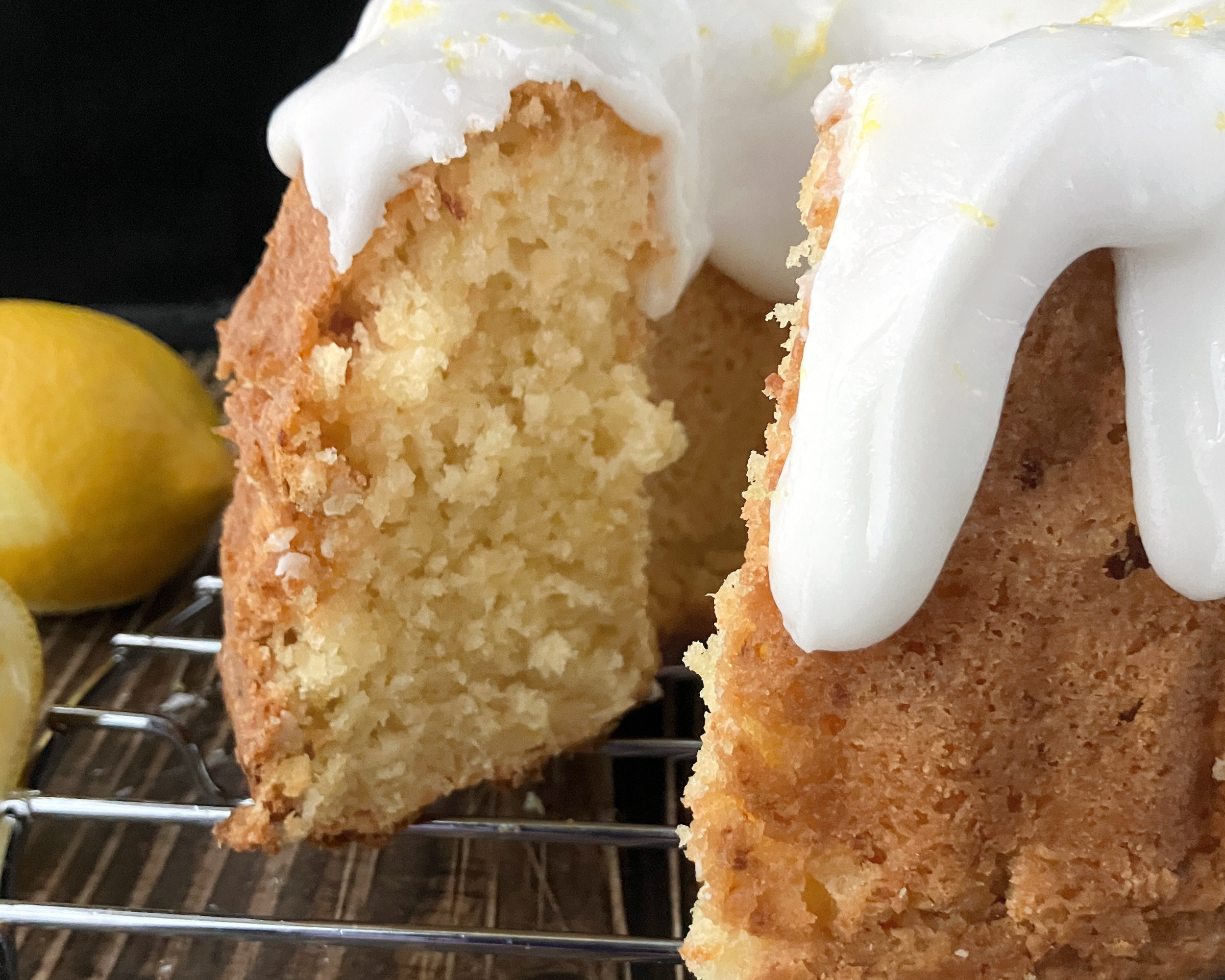

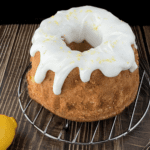

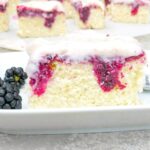
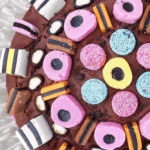
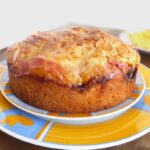
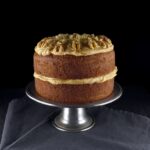
I had some leftover cottage cheese and this was a perfect use of it! My lemon was dried up so I binned it and just used bottled lemon juice for flavour, which worked really well. I only had wholemeal spelt flour but this gave it a delicious nutty taste. Gorgeous cake and the icing packs a lovely lemony kick. Thank you.
Thanks so much for letting me know, Karen! Always lovely to hear positive feedback, and isn’t it great to use up that cottage cheese sitting sadly in the fridge? I will have to try it with wholemeal spelt!